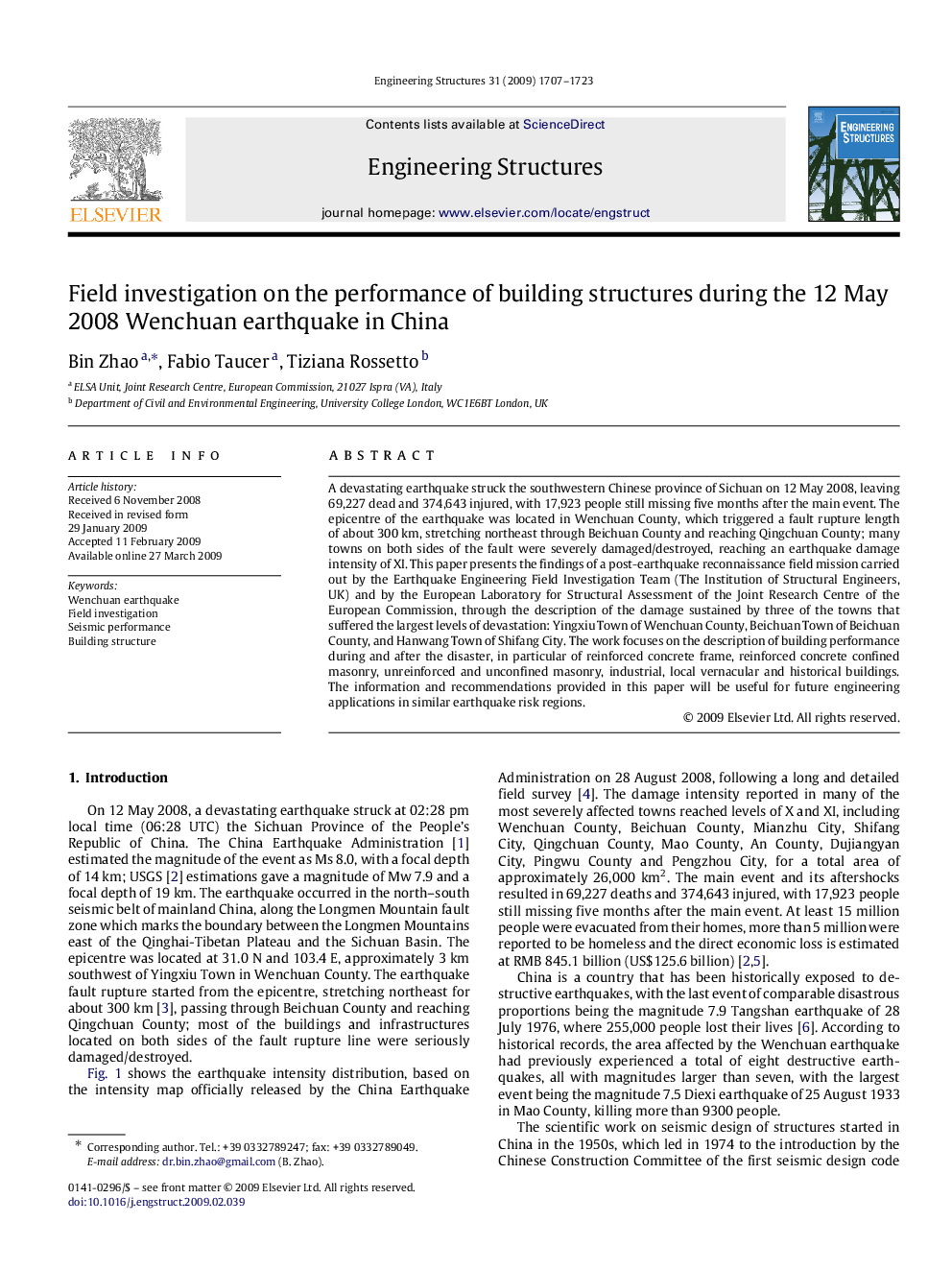| Article ID | Journal | Published Year | Pages | File Type |
|---|---|---|---|---|
| 268403 | Engineering Structures | 2009 | 17 Pages |
A devastating earthquake struck the southwestern Chinese province of Sichuan on 12 May 2008, leaving 69,227 dead and 374,643 injured, with 17,923 people still missing five months after the main event. The epicentre of the earthquake was located in Wenchuan County, which triggered a fault rupture length of about 300 km, stretching northeast through Beichuan County and reaching Qingchuan County; many towns on both sides of the fault were severely damaged/destroyed, reaching an earthquake damage intensity of XI. This paper presents the findings of a post-earthquake reconnaissance field mission carried out by the Earthquake Engineering Field Investigation Team (The Institution of Structural Engineers, UK) and by the European Laboratory for Structural Assessment of the Joint Research Centre of the European Commission, through the description of the damage sustained by three of the towns that suffered the largest levels of devastation: Yingxiu Town of Wenchuan County, Beichuan Town of Beichuan County, and Hanwang Town of Shifang City. The work focuses on the description of building performance during and after the disaster, in particular of reinforced concrete frame, reinforced concrete confined masonry, unreinforced and unconfined masonry, industrial, local vernacular and historical buildings. The information and recommendations provided in this paper will be useful for future engineering applications in similar earthquake risk regions.
